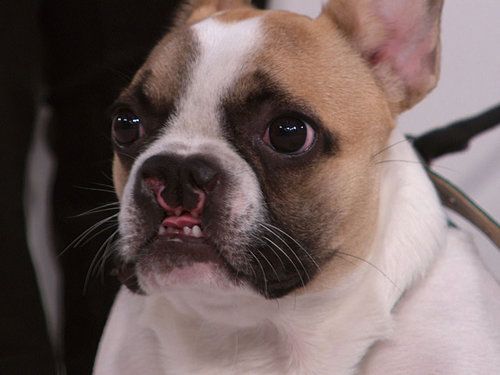Cleft Palate in Dogs

Introduction
While a cleft palate happens in humans, it also happens in dogs. This condition, commonly mistaken as a hair lip, is something to know more about if you ever come across it with one of your own puppies or a dog you plan to adopt. Here is what it is, how it happens, treatment methods, and everything else you want to know about cleft palate in dogs.
What is a Cleft Palate?
A cleft palate is a birth defect. It is also called congenital oronasal fistula or palatoschisis and this happens in the mother during pregnancy.
What Causes a Cleft Palate?
In more simple terms, a cleft palate is when the fusion of the hard palate in the roof of the mouth does not fuse correctly and causes a hole in the roof of the mouth. What happens is a full or partial connection between the mouth and the nasal cavity. This birth defect happens when the mouth or lips do not form properly and is called a orofacial clefts.
It is interesting to know that there are various forms of the cleft palate. A puppy may have both a cleft palate and cleft lip or just a cleft lip or cleft palate alone. The words itself means partially divided in two or split – which is where the cleft palate definition comes from.
The Signs or Symptoms of a Cleft Palate
According to Wag Walking:
A newborn pup with a severe opening of the palate will unfortunately die of starvation if the defect is not detected early on. The pup will not be able to get adequate nourishment from nursing, and there is the possibility that any liquid he is able to take in will be aspirated, leading to pneumonia and death. Puppies that have a less acute cleft palate can continue to grow, albeit slowly. However, issues with the health of your dog may be seen with the following symptoms:
- Stunted growth due to poor weight gain
- Breathing difficulties upon exertion
- Coughing or gagging
- Nasal discharge that may include food Infection or pneumonia due to food aspiration
In many cases, the cleft palate is quite visible and easily spotted. In other cases, you will see the above symptoms first. In this case, it is important to see the vet so that the cleft palate, if present, can be diagnosed. This allows you to care for the dog properly with the cleft palate condition.
What Are the Causes?
Since this is a birth defect, the odds of it happening depend on a few factors. Yet, there are specific breeds that seem to be more prone to this condition. For instance, dogs with shorter noses (pekingese, pug, etc) are more prone to have a cleft palate. Although there are other breeds prone as well such as the German Shepherd, Labrador, Beagle, Sheltie, and dachshund. This is a genetic issue but there are also cases where the mother of the puppy was exposed to certain chemicals or too many vitamins.
How is it Diagnosed?
As mentioned, some puppies show a prevalent cleft palate that is easy to spot. In other cases, there may be signs like constant nasal discharge or a bad odor from the dog’s nasal cavity. In cases where the vet has to make a diagnosis, the dog is usually put under anesthesia so that the vet can examine the oral cavity. Usually the hole in the roof of the mouth can be seen but sometimes x-rays may be needed to check for secondary conditions like pneumonia.
Treatment for Cleft Palate in Dogs
When it comes to treatment for cleft palate in dogs, it depends on factors like the dog’s age, severity of the issue, the dog’s age, and quality of life.
According to Pet Health Network:
The only effective treatment for clefts involving the lips and palate is surgical closure. Depending on the extent of the cleft this repair may be relatively simple or may be complex particularly in puppies. If possible, the puppy should be supported by feeding with a tube until 3-4 months of age to allow the opening to grow smaller and the oral cavity larger.
Some dogs require additional surgeries after the first one but this is not the norm. It is simply something to be aware of so that you can budget for it in case it is needed.
Cost to Treat: $2,000 to $4,000
Home Care
Before surgery, a home care regimen must be done. For a newborn, there are even more specific care techniques. Since the puppy is not old enough for surgery, it must be fed with a tube every few hours (3-4) and this will have to go on until they can withstand surgery at two or three months old.
If it is an older dog, surgery is also the only option and home care is easier but if there is any presence of pneumonia, this has to be cured before the surgery.
In some instances, your dog will need to be fed by tube for up to seven days after the operation. Your veterinarian will then discuss the best way to proceed; a soft diet for the next six weeks minimum is the usual recommendation.
Since surgery is an expensive option, and the only option, pet health insurance is recommended. This will cut down on the costs that you must undertake in order for your dog to live a healthy and happy life.
Related Content


















